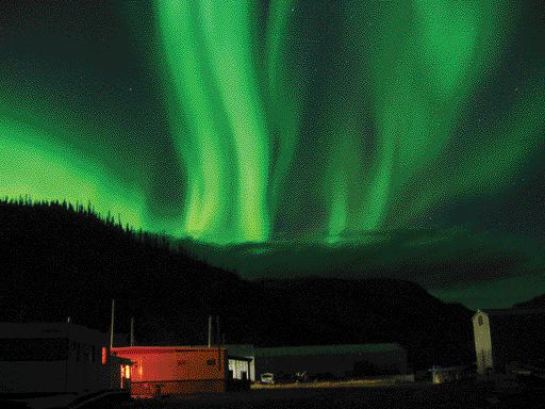Vancouver — Underground drilling by Canadian Zinc (CZN-T, CZICF-O) on its Prairie Creek zinc-lead-silver deposit in the Mackenzie Mountains region of western Northwest Territories is returning a number of wide mineralized intervals.
The latest round of several underground holes completed from a recently established decline all intersected vein-hosted mineralization with a notable widening of the vein towards the north.
Hole PCU-07-32 cut 46.7 metres (estimated true width of 29.5 metres) grading 11.8% lead, 2.9% zinc, 185 grams silver per tonne and 0.33% copper. Within the vein-hosted interval, a 7.7 metre section (4.9 metres true width) averaged 25.8% lead, 9.1% zinc, 561 grams silver and 1.3% copper.
The most northerly hole (PCU-07-34) in the set also encountered multiple intervals of stratabound lead-zinc mineralization farther downdip.
Partial results from a pair of holes collared at the end of the decline returned high-grade zinc intervals of up to 20.4% over 1.9 metres, also in the vein structure.
The company’s underground drill program is looking to further define the vein-hosted mineralization in the Prairie Creek Main zone (Zones 1-3) to upgrade a previously tabled inferred resource.
A 1998 (pre-National Instrument 43-101) resource estimate for Zone 3 of Prairie Creek showed 3.6 million measured and indicated tonnes averaging about 11.8% zinc, 9.7% lead, 141 grams silver and 0.3% copper in all categories of mineralization (veins, stratabound and stockworks). Another 8.3 million inferred tonnes grading 12.8% zinc, 10.3% lead, 169 grams silver and 0.4% copper was also reviewed.
An engineering firm has recently been engaged to compile a new resource estimate for the deposit.
Vein-hosted mineralization is associated with the north-south-trending Prairie Creek fault, which has been traced for more than 10 km. A dozen separate, veined massive sulphide occurrences have been identified; these consist of quartz-vein systems heavily mineralized with lead, zinc, copper and silver. The vein system remains open to the north and at depth.
Stratabound mineralization was discovered at Prairie Creek in the early 1990s. Generally occurring between 300 and 500 metres below surface, stratiform massive sulphides parallel bedding and contain zinc, lead and iron sulphides with some silver and minor copper.
Additionally, cavity-infilling style Mississippi Valley-type mineralization has been identified in the northern portion of the property.
Canadian Zinc’s predecessor company, San Andreas Resources, initially acquired an option on the project in 1991, and carried out extensive drilling and rehabilitation of underground workings, as well as engineering and metallurgical studies.
A scoping study in 2001 suggested that the operation could be brought to production at a capital cost of about $40 million. Annual output was pegged at 95 million lbs. zinc plus byproduct lead and copper concentrates containing significant silver. The project has the benefit of having about $100 million worth of mine development, a 1,000-ton-per-day mill and infrastructure already in place from previous owners.
Situated within the South Nahanni River watershed and near the Nahanni National Park Reserve, the project is in an environmentally sensitive area. Having already undertaken a number of environmental assessments and securing most of the required permits to begin mining, one remaining hurdle for Canadian Zinc is securing a Type-A water-use licence that would allow for lead-zinc concentrate production.


Be the first to comment on "Canadian Zinc sees Prairie Creek vein widen to north"